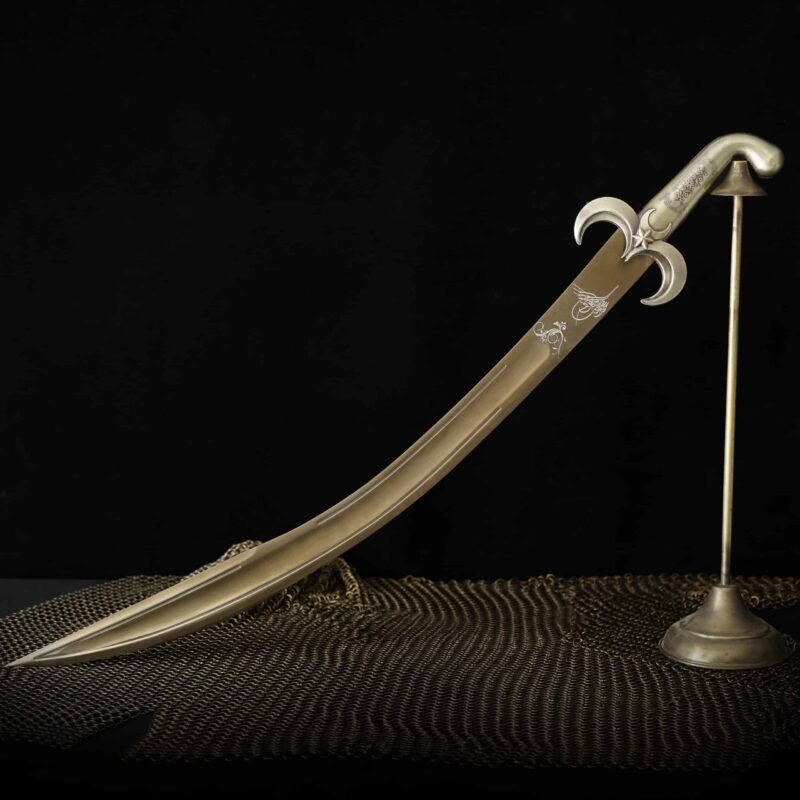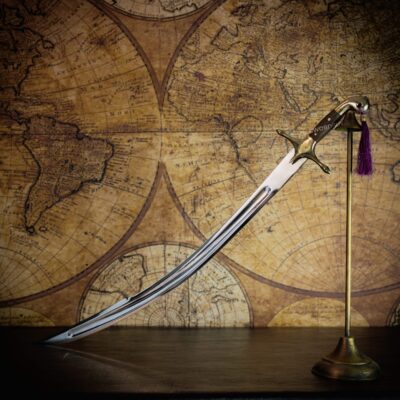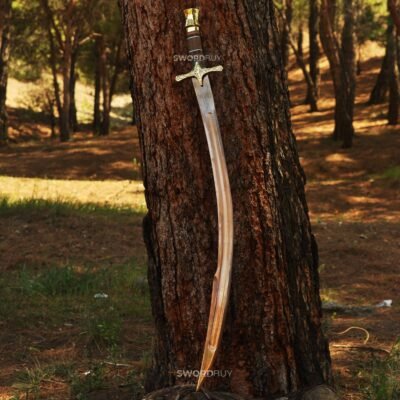The Kilij Sword: A Symbol of Power and Art in Ottoman History
The Kilij sword is not just a weapon; it is a historical artifact that encapsulates the essence of the Ottoman Empire’s military prowess and artistic mastery. This unique sword, with its distinctive curved blade and cultural significance, has fascinated historians, collectors, and martial arts enthusiasts alike. In this article, we will explore the origins, design, craftsmanship, and the enduring legacy of the Kilij sword, providing a comprehensive understanding of why this weapon holds such a revered place in history.
Origins of the Kilij Sword
The word “Kilij” originates from the Turkish word for “sword.” However, the Kilij is not just any sword; it is a specific type of saber with a deeply curved blade, designed primarily for slashing. The Kilij’s design evolved from the swords used by the Turkic tribes of Central Asia, who brought these early forms of the weapon with them during their migrations westward. Over time, the design of the Kilij was refined and perfected, particularly during the Seljuk and Ottoman periods, where it became the quintessential weapon of the Ottoman cavalry.
Design and Structure of the Kilij
The Kilij is easily recognizable due to its deeply curved blade, which is most prominent in the upper third of the sword. This curvature allows for powerful slashing attacks while on horseback, making it a devastating weapon in the hands of a skilled rider. The blade typically ranges from 28 to 35 inches in length, with a single edge that tapers to a sharp point, enabling both cutting and thrusting techniques.
Yelman: The Kilij’s Signature Feature
One of the most distinctive features of the Kilij is the yelman, an expanded tip near the end of the blade that provides extra weight, enhancing the sword’s cutting power. The yelman also allows for more effective slicing motions and gives the Kilij a more intimidating appearance. This feature is unique to the Kilij and is not found in other types of swords, making it a hallmark of Ottoman sword-making craftsmanship.
Craftsmanship and Materials
The making of a Kilij was an art form in itself. Ottoman swordsmiths were renowned for their ability to create blades that were both functional and aesthetically pleasing. The process of crafting a Kilij involved forging high-quality steel into a blade that was both flexible and durable. The steel was often folded multiple times during the forging process, a technique that added layers to the blade, making it stronger and more resilient.
The hilt of the Kilij was typically made from materials such as wood, bone, or ivory and was often adorned with intricate designs, inlaid with silver, gold, or precious stones. The guard, or quillon, was usually designed to protect the wielder’s hand while allowing for a firm grip, essential for the swift, powerful movements required in battle.
The Role of the Kilij in Ottoman Warfare
The Kilij was not just a weapon; it was a symbol of status and power within the Ottoman military. Elite soldiers, known as sipahi or janissaries, were often equipped with Kilij swords. These soldiers were the backbone of the Ottoman military, and the Kilij was an essential part of their arsenal.
In battle, the Kilij’s design made it particularly effective for cavalry charges. The curved blade allowed for powerful slashing attacks that could cut through armor and inflict serious injuries on opponents. The Kilij was also highly versatile, able to deliver quick, deadly strikes from horseback while maintaining the speed and agility necessary to avoid counterattacks.
Cultural Significance of the Kilij
Beyond its use on the battlefield, the Kilij held significant cultural and symbolic value in Ottoman society. It was often used in ceremonial functions and was a symbol of authority and prestige. High-ranking officials, including sultans, were often depicted with Kilij swords, emphasizing their power and leadership.
The Kilij also featured prominently in Ottoman art and literature. It was a common motif in miniature paintings, where it was depicted in the hands of heroes and warriors, symbolizing bravery and strength. The sword was also mentioned in poetry and songs, further embedding it in the cultural consciousness of the time.
The Kilij in Modern Times
Today, the Kilij continues to be a symbol of Turkish heritage and pride. While it is no longer used in combat, the sword is still revered as a work of art and a piece of history. Many Kilij swords are preserved in museums, where they are displayed alongside other artifacts from the Ottoman era. Collectors and historians value the Kilij not only for its historical significance but also for its craftsmanship and aesthetic beauty.
In recent years, there has been a resurgence of interest in traditional Turkish martial arts, including swordsmanship, where the Kilij plays a central role. Modern practitioners study the techniques and forms used by Ottoman warriors, keeping the legacy of the Kilij alive for future generations.
The Kilij sword is more than just a weapon; it is a symbol of the Ottoman Empire’s military might, cultural richness, and artistic achievements. Its unique design, expert craftsmanship, and enduring legacy make it one of the most iconic swords in history. As we continue to study and appreciate the Kilij, we gain a deeper understanding of the values and skills that defined an era.
Related Post:





